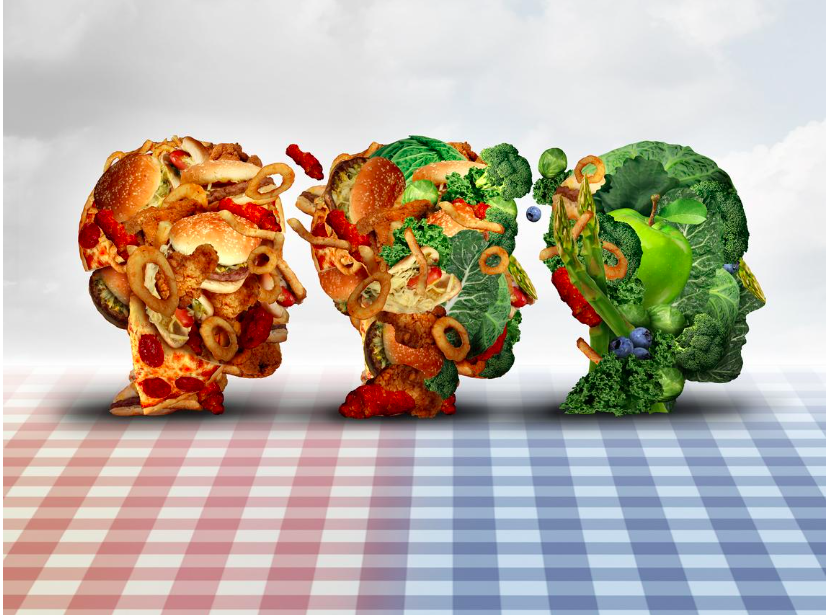Bliss Point is not going anywhere. A raging multi-billion dollar food industry has made it a global
monopoly whose sole end game is to make a profit by manipulating the consumer’s will power to
continue consuming unhealthy foods. Even with greater health awareness and consumers
making healthier food choices, food companies have kept pace by marketing so called “healthy”
food product lines targeting the vast array of dietary lifestyles such as sugar, fat or grain free to
mention a few.
You can take control of your food choices and decided on your own terms what to eat. The first
step to breaking your Bliss Point is the awareness that you have one and the second step is to
want to make a change and tackle your cravings. The best way to do this is teaching your brain
to create new healthy habits. By creating new habits you can break old ones. Trying to break
your cravings or addictions cold turkey is a futile effort. Our brains favor familiarity and
consistency. Another words, once our brain gets used to repetitive behaviors, it becomes
hardwired over time and introducing new behavioral approaches can be a challenge.
The great news, however, is your brain is malleable, learns and experiences new things all the
time and so forming a new and repetitive habit is much easier to incorporate which in turn can
phase out unwanted old habits.
Here are Strategies to help you kick your Bliss to the curb:
- Minimize Processed Foods: Most foods are processed to some degree but usually it’s the
foods that have gone through significant changes from its natural state or foods that have been
engineered are the ones you should worry about. Stick to eating more unprocessed foods which
are whole foods like fruits, vegetables and whole grains and if you want to enjoy occasional
snack foods purchase snack or individual size packages that help control portion size for any
processed food you consume. - Be Weary of Food Marketing Language: Food companies market you processed foods with all sorts of buzzwords like “heart healthy”, “all natural”, “organic, multigrain, “sugar free”, “ madewith real fruit”, among many others. These buzz words are usually plastered on the front of the box which keeps the consumer from taking that extra step to read the ingredients or nutritional facts to see what’s really in their products.
- Play with a variety of Flavors: Don’t forget to incorporate other flavors into our diet. Most processed foods are targeted to your sugar and salt taste buds. Yet there are 3 others that have been overshadowed: Sour, Bitter and Umami. These flavors yield lower satiety so they are excellent at keep you full.
- Control your Portion size: Never eat directly out of packaging. Unless you have great will power, you are likely to eat more when eating straight out of a bag of Chips, Box of Cookies, container of ice cream etc., then if you take out a individual size portion onto a plate/bowl. Secondly, consider buying single size snack packs that allow for portion control and keep your Bliss Point at bay.
- Look at the Ingredients Not Just the Nutrition Label: Ingredients are listed in predominant order by weight. A good rule of thumb is to look at how far down the list ingredients like Sugar, Salt and Fats. If you see any of these ingredients in the first 5 listed its better to find alternative snacks. There are over 60 sugar types the most common starting or ending in the term “-ose”, “cane”, “syrup”, “corn”, “crystals” and “palm” along with sweetners. Fats come in the form refined or hydrogenated oils, soybean, cotton, canola, and corn as well as margarine, shortening and lard, all common place in processed foods. Any one or all of these ingredients can over time lead to inflammation and poor health outcomes.
- Be Mindful When Eating: Give focus and attention to the foods you eat and be self aware of the servings of processed food you are eating in a sitting, daily or even weekly. In addition, you bliss point is guilty for by passing your fullness cues so take caution to you body’s cue when it tells you that you are full or commit to stopping after one small serving. Thirdly, eat slowly …research shows that people will eat processed foods faster than whole or natural foods. Eating slowly and steadily will allow you to control and reduce your bliss point. Lastly never go to the grocery store hungry as you are more likely to purchase high caloric foods that usually are ultra processed foods.
